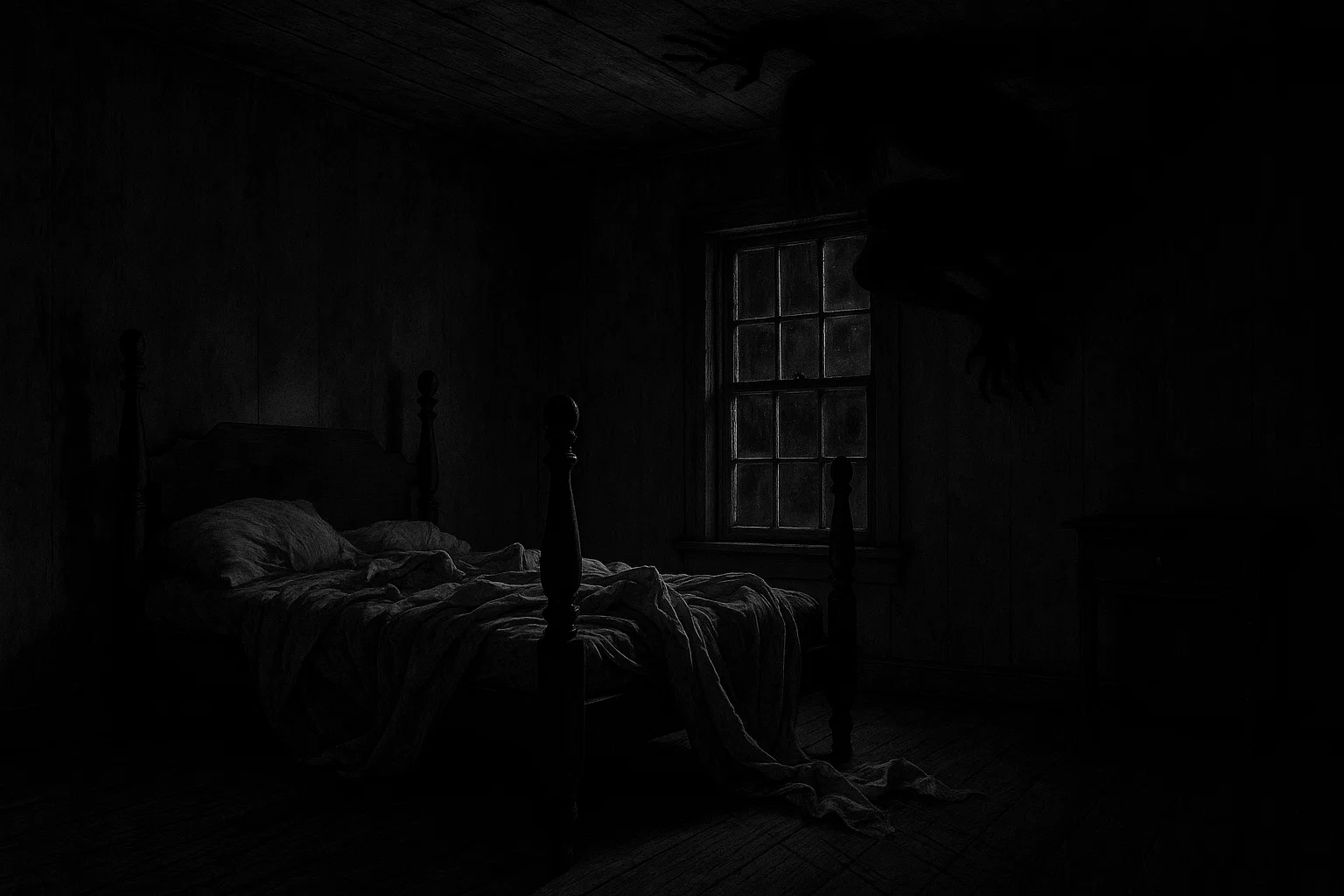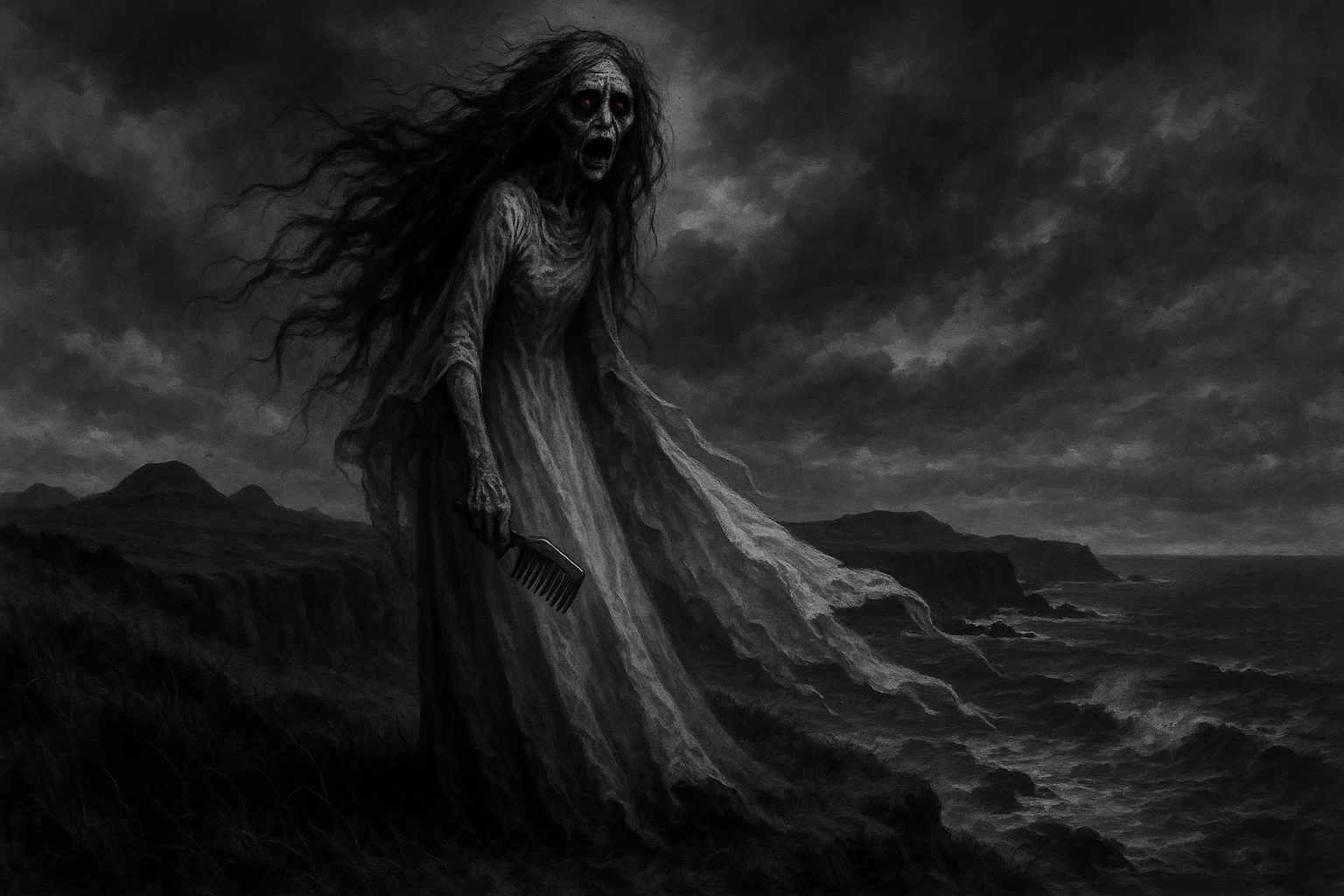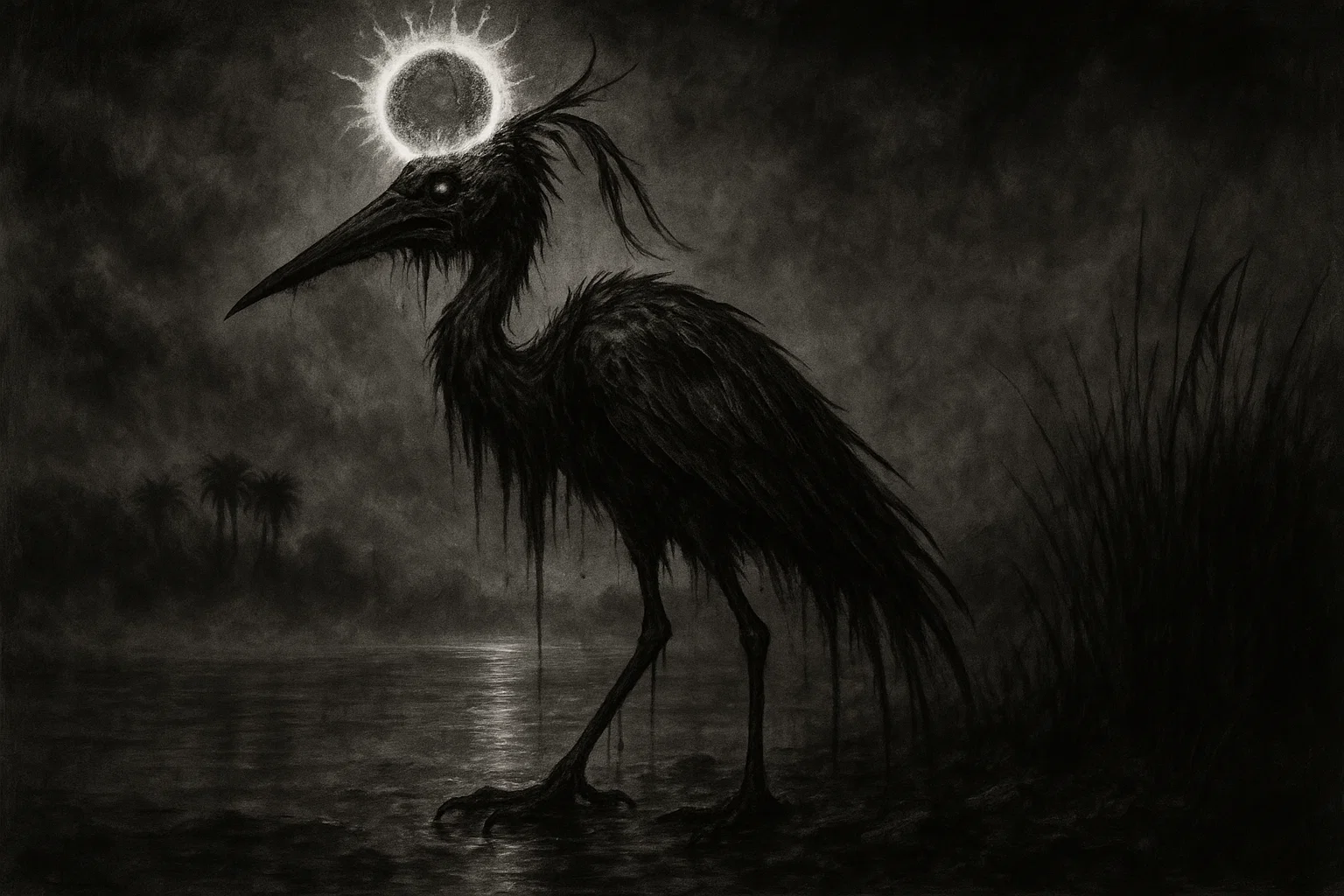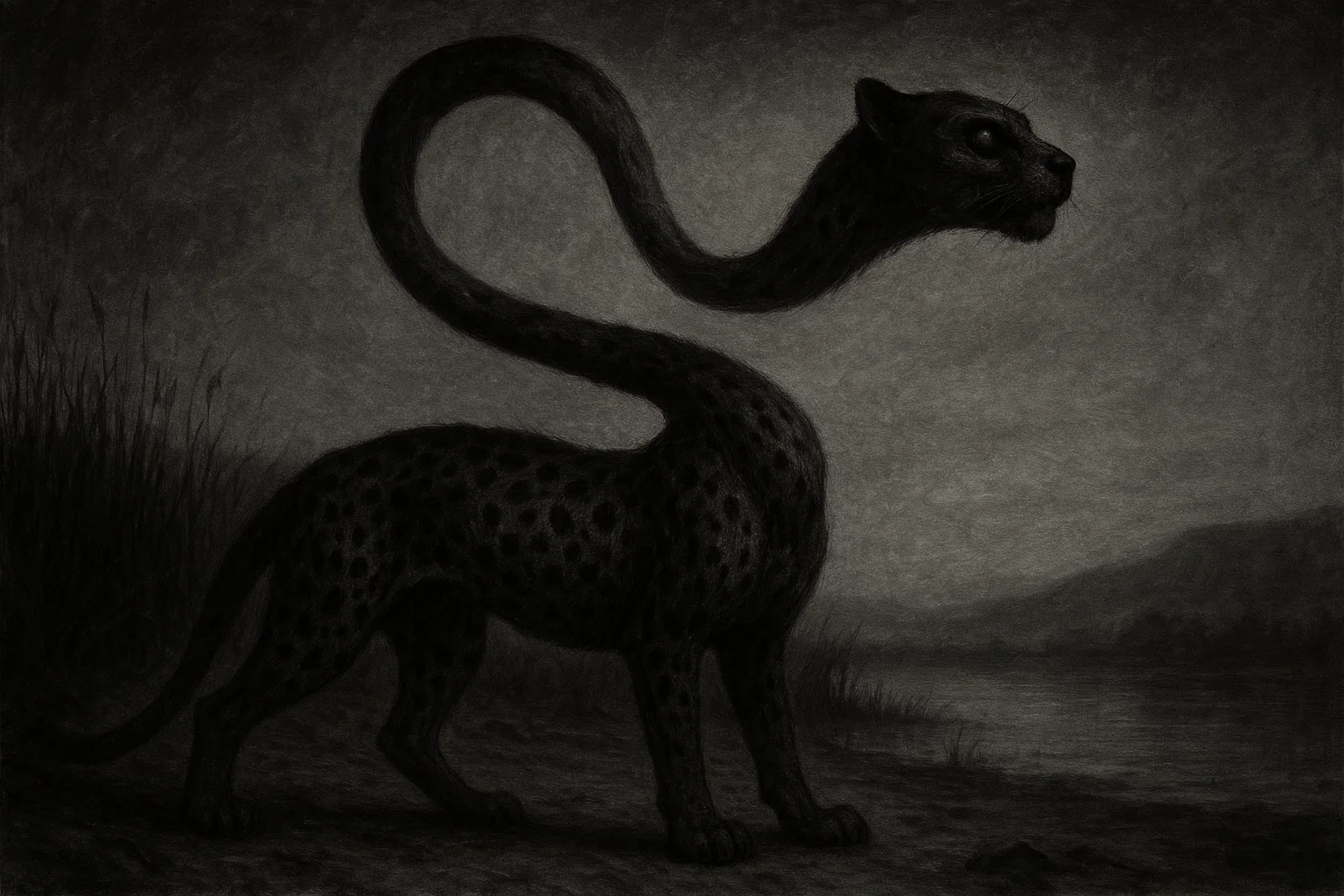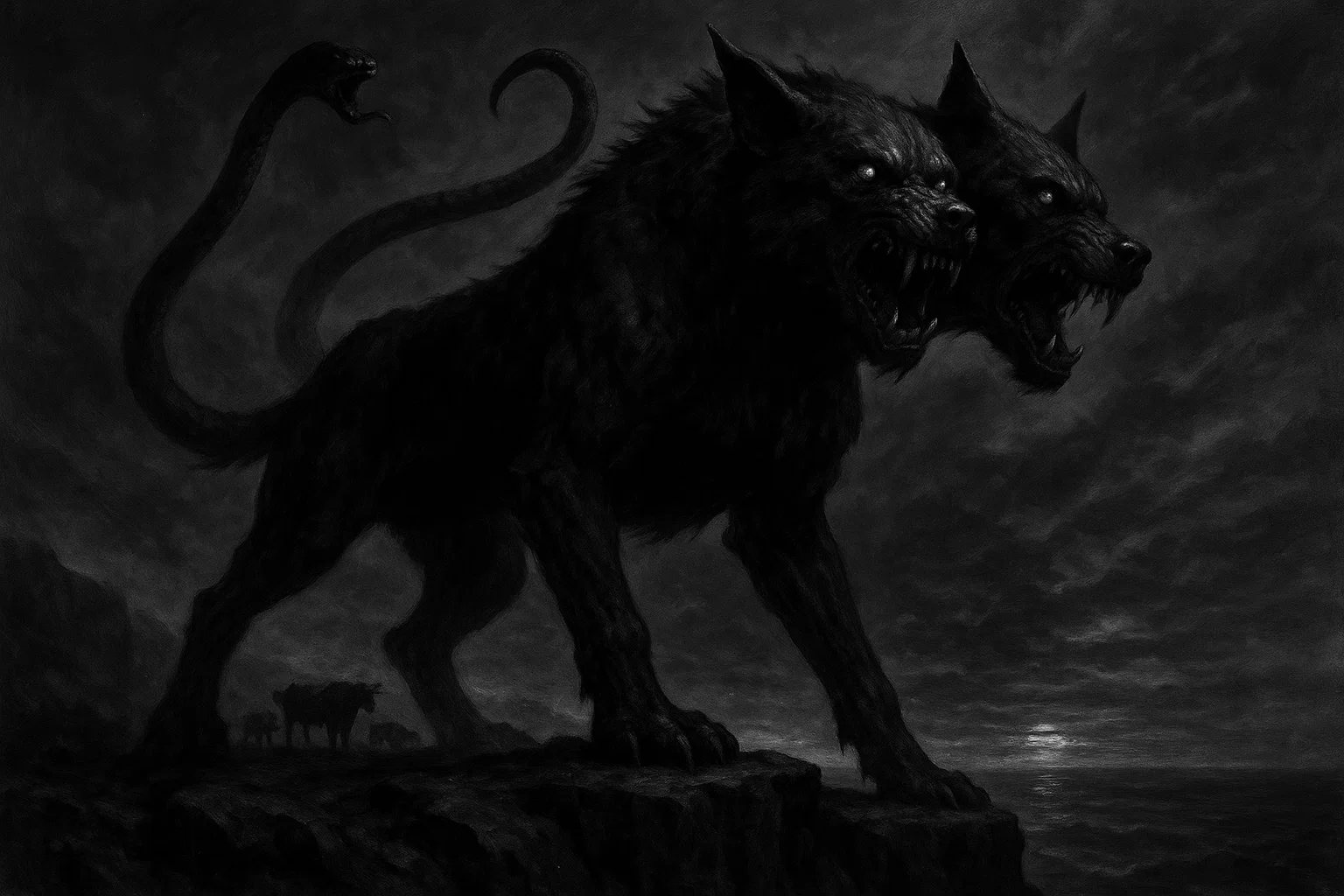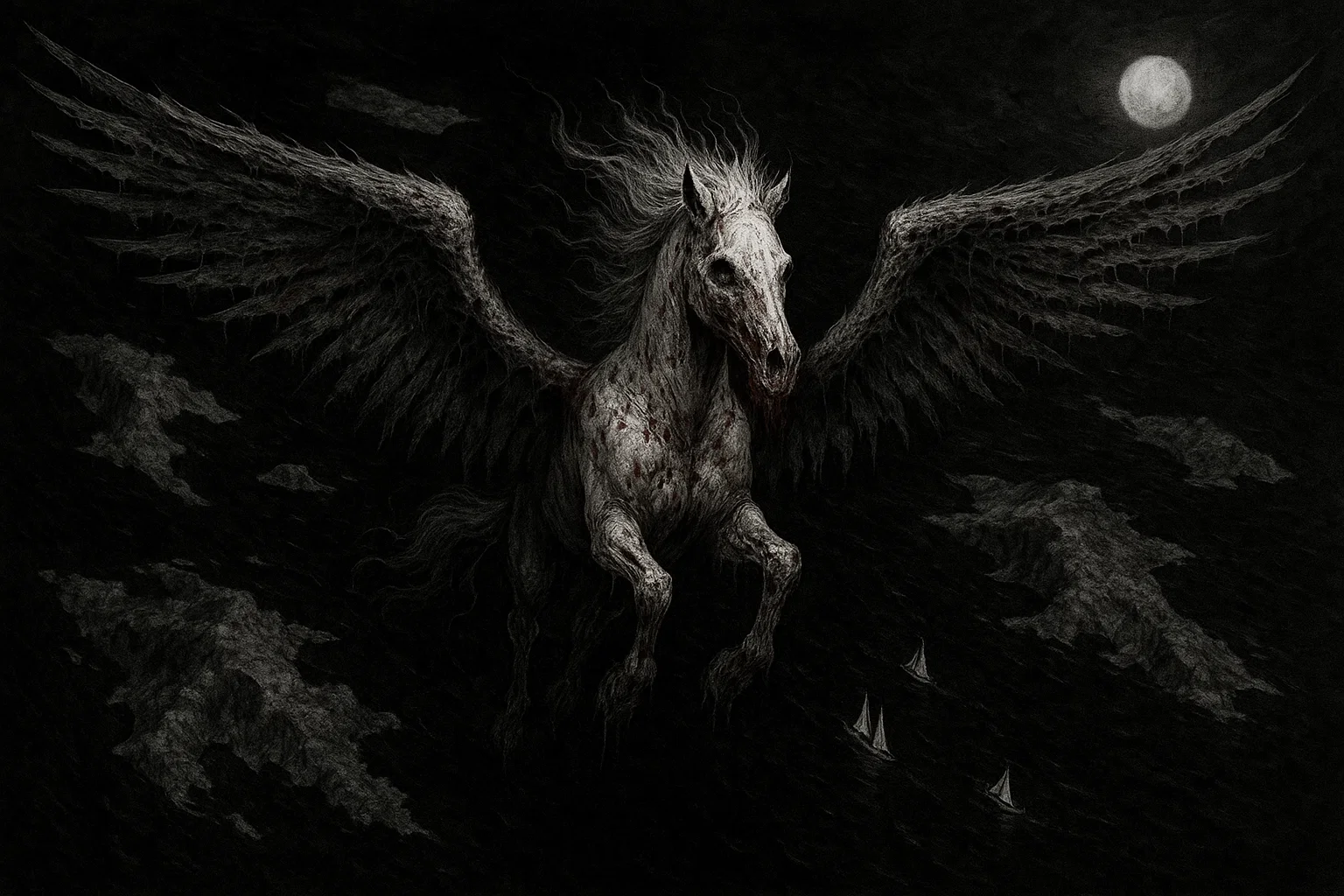The Bell Witch is a legendary demonic entity that reportedly tormented the Bell family in Robertson County, Tennessee, from 1817 to 1821.
This poltergeist-like spirit (that identified itself as Kate) exhibited intelligent interactions, physical assaults, and clairvoyant abilities, culminating in the death of family patriarch John Bell Sr.
The story remains one of America’s most terrifying ghost stories, drawing thousands of paranormal fans to the site near Adams, Tennessee.
Summary
Key Takeaways
| Attribute | Details |
|---|---|
| Name | The Bell Witch; alternative names include Kate, Bell Witch Poltergeist, and Old Kate Batts’ Witch. |
| Location | Near Adams in Robertson County, Tennessee, United States; centered on the former Bell family farm along the Red River, approximately 40 miles northwest of Nashville. |
| History | John Bell Sr. settled the farm in 1804; disturbances began in 1817 with animal sightings and noises, escalating to physical attacks and John Bell’s poisoning death in December 1820 amid family tragedies like failed engagements and community intrusions. |
| Type of haunting | Intelligent, Poltergeist, Demonic. |
| Entities | A female spirit self-identifying as Kate, possibly linked to neighbor Kate Batts; shapeshifting forms include a dog-rabbit hybrid and shadowy figures. |
| Manifestations | Knocking and dragging sounds, whispering voices, physical slaps and pin pricks, objects thrown, strange animal sightings, foul odors, temperature drops, clairvoyant predictions, and verbal taunts. |
| First reported sighting | 1817, when John Bell encountered a bizarre dog-like creature in his cornfield. |
| Recent activity | Ongoing reports at the Bell Witch Cave; in 2020, investigators captured electronic voice phenomena during a Discovery Channel broadcast, including whispers and knocks echoing 19th-century events. |
| Open to the public? | Yes; visitors can tour the Bell Witch Cave and recreated cabin via guided tours at the Bell Witch site in Adams, Tennessee, with annual festivals and re-enactments available seasonally. |
What Is the Bell Witch?
The Bell Witch embodies a classic poltergeist haunting combined with demonic undertones, centered on the early 19th-century Bell family farm in rural Tennessee.
This demonic entity (often described as a malevolent female spirit) initiated contact through subtle auditory cues before manifesting violently—slapping faces, pulling hair, and hurling objects across rooms.
Unlike residual ghosts that replay past events, the Bell Witch displayed intelligent traits: it spoke fluently, quoted distant sermons verbatim, and predicted outcomes with uncanny accuracy.
Family members (particularly John Bell Sr. and his daughter Betsy) bore the brunt of the assaults. Betsy endured relentless pinpricks and slaps, while John suffered facial paralysis and swallowing difficulties. The demon’s ability to change form—appearing as a half-dog, half-rabbit beast or a cloaked figure—made things even worse for the Bell family.
In 1821, after vowing vengeance, the entity allegedly poisoned John, solidifying its reputation as a harbinger of doom.
You May Also Like: 15 True Ghost Stories You Shouldn’t Read Alone After Midnight
Bell Witch History
In 1804, John Bell Sr., a 54-year-old farmer from Halifax County, North Carolina, moved with his family—wife Lucy Williams Bell, sons Jesse, John Jr., Drewry, and Benjamin, and daughters Betsy and Mary—to a fertile 320-acre farm along the Red River in Robertson County, Tennessee.
The Bells, devout Baptists, integrated well into the community near Adams Station, with John serving as a church elder at Red River Baptist Church.
Things were good for the Bell family. Plentiful crops and cheap slaves quickly helped them amass a small fortune. However, that didn’t last.
A 1817 land deal with neighbor Kate Batts (a widowed merchant known for her fiery temper) soured over disputed terms involving slaves and property lines. The botched deal was followed by a violent dispute between Batts and John Bell, and by rumors of curses later tied to the Bell Witch.
The first paranormal manifestations started just a few months later after this dispute, in the summer of 1817. John, while patrolling his cornfield at dusk, allegedly spotted a grotesque creature—a dog’s body topped with a rabbit’s head, eyes glowing like coals.
He shot at it, but his musket shots missed as the creature vanished, leaving just scorched grass behind. That night, the family awoke to scratching on the walls of their cedar house, as if claws raked the wood.
By fall, disturbances intensified: bedposts appeared gnawed, chains seemed to drag across floors, and covers were yanked off sleeping children. Lucy’s prayers were met with ridicule as strange whispers mimicked her voice.
Meanwhile, 15-year-old Betsy, full of life and energy, became a favorite target for the same mocking spirit—especially as she started to show interest in Joshua Gardner, the son of a local farmer. The spirit didn’t approve of their developing romance and promised to do everything it could to break them apart.
By 1818, the Bell Witch began speaking directly to the family, adopting a shrill female voice and calling itself Kate. It also displayed some uncanny abilities. For example, in one instance, it allegedly recited two sermons delivered simultaneously 13 miles apart at Methodist churches in Clarksville and Springfield, word-for-word, as noted in Drewry Bell’s journal.
Meanwhile, John’s health continued to deteriorate. His tongue swelled, and facial spasms—possibly Bell’s palsy—left him grimacing.
But John wasn’t the only family member who suffered constant assaults from the mysterious demonic entity. Betsy faced nightly attacks, too: slaps left red welts, pins pricked her skin, and her auburn hair was yanked until she sobbed. The spirit’s taunts also grew personal, shouting, “Betsy, you’ll rue that boy!”
Interestingly, the local physician, Dr. William Bjourney, was called to the Bell residence in 1819 and found no medical cause for the marks, noting, “No human hand moves so swift.”
By this time, the haunting started to draw crowds. Neighbors (like James Johnston) camped in the Bells’ house, witnessing flying candlesticks and hearing multilingual curses—Latin, French, and Cherokee phrases. His experiences were documented in Our Family Trouble.
In 1819, General Andrew Jackson (a friend of John Jr. from the War of 1812) allegedly visited the Bell’s house with an entourage. En route, their wagon stalled on clear ground; a voice declared, “Proceed, General, but beware my tricks.”
That night, knocks rocked the cabin, and the general was tossed from his bed, bruised by unseen hands. Jackson, shaken, reportedly said, “I’d face the British again before this witch!” Historians debate the visit, but Ingram’s 1894 account cites oral testimonies from Johnston’s kin.
The Bell Witch haunting reached its darkest point in December 1820. John Bell Sr., aged 60 and weakened by months of facial spasms and difficulty swallowing, discovered a mysterious smoky vial beside his bed, its bitter contents unlike his usual medicines.
After drinking it on December 20, he suffered violent convulsions, foaming at the mouth, and died within hours. According to witnesses, the entity allegedly gloated aloud, proclaiming, “I slipped Ol’ Jack a dose of my poison!”
Family members, including John Jr. and Lucy, searched for the vial, finding it hidden in the chimney, but 1820s coroners could not identify any toxin, though some suspected arsenic or nightshade.
John’s funeral was pure chaos: clods of dirt flew at mourners, and disembodied laughter echoed, driving attendees away in fear, as recorded in Our Family Trouble.
In early 1821, the Bell Witch’s attacks weakened after Betsy, tormented by years of slaps and pinpricks, ended her engagement to Joshua Gardner. She later married her schoolteacher, Richard Powell. In 1824, some neighbors claimed that Powell had occult interests, possibly linked to the haunting, though no evidence confirms this.
According to Richard Williams Bell’s journal, before disappearing, the Bell Witch vowed to return in 107 years—1937—and again in 2044, predicting further disturbances for Bell descendants, per.
In 1823, a few workers found a child’s remains buried close to the farm. They also found Native American graves near the Bell Witch Cave (a limestone shelter 500 yards from the original homestead), which Kate claimed as her “anchor” to the land.
These discoveries, coupled with reports of desecrated burial sites, fueled tales of a restless spirit tied to the area’s troubled history, amplifying the haunting’s mystique.
The Bell farm, plagued by unexplained fires and mutilated livestock, was abandoned by the early 1840s.
In 1937, local farmers and journalists, including T.H. Alexander of the Tennessean, reported eerie phenomena near the Bell Witch Cave—cold spots, whispers of “Kate’s back”, and fleeting glimpses of a shadowy woman—but no widespread haunting materialized, disappointing those anticipating a dramatic return.
You May Also Like: The Complete List of All Haunted Places in Arkansas
Bell Witch Sightings
| Date | Witness(es) | Location | Description |
|---|---|---|---|
| Summer 1817 | John Bell Sr. | Bell farm cornfield, Adams, TN | Encountered a bizarre creature—body of a dog, head of a rabbit—with glowing eyes; fired shots, but it vanished without trace. |
| Fall 1817–Spring 1818 | Bell family (Lucy, Betsy, sons) | Bell cabin interior | Auditory disturbances: knocking on doors, chains dragging across floors, bedposts gnawed as by rats; beds shaken violently at night. |
| 1818 | Betsy Bell | Bell farm bedroom | Physical assaults: invisible slaps leaving red welts on cheeks, hair pulled forcefully, pins jabbed into back and arms during sleep. |
| 1819 | Andrew Jackson and entourage | Approach to Bell farm | Wagon wheels locked inexplicably; disembodied female voice permitted entry, warning of revelations. Overnight: knocks, an invisible force assaulted a skeptic, hurling him from bed. |
| December 20, 1820 | John Bell Jr., family | Bell cabin bedside | John Sr. found foaming at mouth after ingesting mysterious vial; entity proclaimed, “I gave Ol’ Jack a big dose of poison!” prior to his convulsions and death. |
| 1828 | Dr. Richard Bell (descendant) | Bell farm vicinity | Entity vowed return in 107 years during final “manifestation,” quoting Scripture and predicting family futures before fading. |
| 1934–1937 | Local investigators, journalists | Bell Witch Cave | Anticipated return per 1828 prophecy; reports of cold spots, whispers reciting 1817 events, and shadowy female figures near cave entrance. |
| 1977 | U.S. soldiers from Fort Campbell | Bell Witch Cave | Group heard guttural growls; one doubter gripped by “invisible hand” on chest for seconds, leaving bruises; fleeing amid screams resembling a woman’s wail. |
| 2008–2015 | Ghost hunters, Candi Bauer Mann | Bell farm ruins and cave | Electronic voice phenomena (EVPs) captured: knocks mimicking chains, whispers naming “Kate”; temperature plunged 20°F during sessions. |
| November 2020 | Discovery Channel crew, David Britton | Bell cabin recreation | EVPs of sermons quoted verbatim; knocks synchronized with 1819 timeline; shadowy mass filmed near cave during live broadcast. |
The Dog-Rabbit Beast (1817)
The story of the Bell Witch haunting started one hot summer night in 1817, when John Bell Sr. was out in his cornfields under the bright light of the harvest moon.
As he walked through the rustling corn, he suddenly stopped in his tracks. Before him crouched a strange creature that looked like a mix of a sleek dog and a rabbit, with glowing eyes like burning coals. John aimed his musket and fired, but the creature vanished into thin air, leaving only scorched soil behind.
Later that night, as the family settled in for the evening, they heard something scratching at the wooden walls of their home, along with deep, eerie sounds coming from the woods, as if spirits were gathering nearby.
John’s son, Drewry, wrote in his journal about his father’s pale face and how John insisted the creature was neither a wild animal nor just a bad dream. Some skeptics suggested it was just rabid animals or fevers that caused strange visions. Still, the family found odd paw prints around their yard that couldn’t be easily explained away.
As the week went on, the bizarre occurrences continued. John’s daughter, Betsy, started seeing similar strange figures near the well that would laugh and then disappear. The mysterious entity seemed to be testing the family’s strength but never spoke a word.
The elders in their community dismissed it as mere ghosts from lands once inhabited by Native Americans. Still, John felt an unsettling presence, telling his wife Lucy, “It’s watching us—always watching.”
You May Also Like: 15 Most Terrifying Haunted Hotels in Alabama
Assaults on Betsy Bell (1818)
By 1818, the focus was on Betsy Bell, the family’s lively daughter, who was blossoming in a romance with Joshua Gardner.
Betsy’s nights became terrifying as she experienced strange occurrences while she slept. At times, she would feel an invisible hand slap her face, leaving painful red welts by morning. “The pain felt like a swarm of fire ants,” she later said, crying.
Pins would suddenly appear in her bed, pricking her skin and leaving her sheets stained with blood. Hair would be yanked, pulling her upright and making her scream, which woke everyone in the cabin. Then, a mocking voice would echo through the night saying, “Marry that boy? Over my dead body!”
Her brother, John Jr., witnessed some of these terrifying moments, seeing objects (like utensils and candlesticks) flying through the air and hitting Betsy against the walls, while loud slaps sounded like thunder.
Despite the chaos, Joshua remained hopeful and continued to see Betsy. The demonic entity responded by splashing him with cold water and warning him of heartbreak.
Betsy ended up with bruises and strange marks on her body, making the family doctor, Dr. William Bjourney, puzzled. He said, “No human could strike with such precision—yet her wounds heal far too quickly.” The spirit seemed intelligent, even debating religion with Betsy and quoting Bible verses to justify its anger, claiming it was protecting her purity.
This turmoil strained the family’s relationships. Attempts to push back against the spirit failed. Drewry, the priest, organized patrols that returned empty-handed, and Lucy’s efforts to perform exorcisms only led to laughter and flickering lamps.
By the end of autumn, Betsy and Joshua’s engagement fell apart, and the spirit seemed pleased, saying, “See? I spared you from disaster.”
General Andrew Jackson (1819)
In 1819, Major General Andrew Jackson, known for his victory in New Orleans, arrived at the with nine men. As they traveled, their wagon got stuck in the mud, and suddenly, an eerie voice warned Jackson that danger awaited him. Despite the warning, the group continued and arrived at the Bells’ house before nightfall.
Around midnight, they heard loud knocking on the cabin walls, followed by violent shaking of the building. One soldier, who had been skeptical about the whole situation, was suddenly lifted off the ground and dropped hard, injuring himself.
Not backing down, Jackson called out, asking the spirit to reveal itself. The haunting presence responded by filling the air with odd smells, mixing laughter with low, threatening voices, and even repeating Jackson’s military orders from far away, as if someone had shared secrets about him.
The spirit taunted Jackson, predicting his future as president but also warning him about potential betrayals ahead. The chaos escalated as strong winds whipped through the cabin, sending the men into panic.
As daylight approached, the group fled in a hurry, leaving behind most of their belongings. Jackson later told a friend, “This isn’t a joke—I’d rather face the British than deal with this ghost!”
You May Also Like: What Are the 14 Types of Hauntings? Everything You Need to Know
The Fatal Poisoning of John Bell (1820)
In December 1820, a dreadful scene unfolded as John Bell Sr. lay dying beside his bed. Just days before, he had accidentally knocked over a small vial filled with a clear liquid that smelled strong and sharp, thinking it was medicine.
Shortly after, he began to have severe seizures, struggling to breathe as he lay there, unable to speak. His family rushed to his side, and amidst the chaos, a strange voice could be heard laughing, declaring, “A little from my bag for Ol’ Jack—it’s time for payback!”
As John suffered, his sons, John Jr. and Benjamin, took notes on the bizarre events happening around them. They recorded his ramblings, filled with curses, predictions about their sister Betsy’s troubles, and mockery about family land disputes.
After John passed away, the vial he had touched mysteriously disappeared, only to be found later stuck in the chimney. When examined, its contents tasted bitter and couldn’t be identified. The coroner labeled John’s death as a “divine visitation.”
Still, rumors swirled that he might have been poisoned with arsenic or nightshade, though there was no solid proof.
Discovery Channel Investigation (2020)
In November 2020, a team from the Discovery Channel, led by historian David Britton, explored a recreated cabin associated with the Bell Witch for a live broadcast.
As night fell, strange sounds began to occur—muffled knocks and whispers that seemed to say “Kate returns” in an old-fashioned way. A thermal camera picked up a tall, shadowy figure near the fireplace that appeared to be breathing; the temperature suddenly dropped by 15°F, and frost started to form on the windows, which was unusual for that time of year.
Britton began reading old texts about the Bell Witch. To everyone’s surprise, responses echoed back, with the entity repeating sermons from 1819 word-for-word. The sounds became chaotic, with multiple voices overlapping.
One of the crew members even got scratches on their skin that looked like the scars from a famous victim, Betsy Bell. Many on the team started feeling unwell, and two had to leave because they felt dizzy.
Nearby, a drone picked up glowing orbs zooming around, which then formed into a brief image of a woman on the rocks. A technician reported over the radio, clearly shaken, “It’s here—watching.”
When the broadcast was edited and aired, it included eerie sounds that mentioned “poison for Jack.” Skeptics dismissed this as just our brains trying to make sense of random noises, but doctors confirmed that the unexplained marks on the crew members were real.
Theories
Vengeful Spirit Hypothesis
Supporters of the vengeful spirit theory believe that the Bell Witch is the angry spirit of Kate Batts, a real-life neighbor who had a bitter land dispute with John Bell in 1817.
Kate was known to be difficult and often went to court over issues. She accused John of cheating her in a property deal that involved slaves, and her will from 1822 shows she still held onto those grudges. The spirit identified itself as “Old Kate Batts’ witch”. It mimicked her voice, often teasing John about the land he had taken from her and predicting problems for his family related to inheritance.
The events connected to the Bell Witch (such as poisonings) resemble typical frontier disputes in which arsenic, a common poison, was used to settle scores. The spirit’s knowledge of the future seems to reflect the deep anger of a hurt woman.
A book called Ingram’s Authenticated History even quotes the witch’s curses in Kate’s own way of speaking.
You May Also Like: The Forgotten Werewolf Case of Henry Gardinn
Poltergeist Tied to Familial Stress
The poltergeist phenomenon is often explained as the result of hidden emotions and energy from the Bell family, particularly their teenage daughter Betsy, who was experiencing romantic troubles.
In 1818, at just 15 years old, Betsy was engaged to Gardner. Still, her parents, particularly her father, John, disapproved of the relationship. This conflict led to a lot of pent-up feelings, which were thought to have manifested as strange occurrences in their home, like objects being thrown and even unexpected slaps, which could be understood as her mind reacting to stress.
Similar cases, like the Enfield Poltergeist in 1977, also involved troubled teens and suggest that strong emotions can create these so-called “noisy ghosts.
John Bell, the father, displayed symptoms that might indicate a medical condition or perhaps even poisoning from pesticides used on their farm. These symptoms were likely heightened by the stress of family arguments.
Some reports suggest that the strange voice and sounds attributed to the poltergeist could be explained as ventriloquism or even hallucinations, which are not uncommon among people living in isolated areas.
Critics (like skeptic Paul Kurtz) think that what the Bell family experienced might be similar to mass hysteria, where people influence each other’s feelings and symptoms. However, some accounts of clairvoyance, such as hearing distant sermons, challenge the idea that everything can be explained by psychological means.
Overall, this theory views the events not as supernatural but as reflections of human struggles during tough times—such as financial problems, moral dilemmas arising from slavery, and strong religious beliefs.
Research by Candi Bauer Mann in 2008 even linked some symptoms to a virus that caused both unusual movement and visions. In this light, the figure of the so-called “Bell Witch” represents deep-seated trauma, and her occasional “return” symbolizes unresolved issues in the Bell family’s history.
Hoax Perpetrated by Richard Powell
A common skeptical view suggests that the haunting was actually a clever trick played by Richard Powell (who was both Betsy’s schoolmaster and her secret lover). He reportedly tried to ruin her engagement to Joshua Gardner by staging the haunting.
Powell, who was 28 years old and had influence in the community, supposedly recruited accomplices—either family members or some of the slaves working on the property—to help him with pranks.
After Betsy married Powell in 1824, the strange occurrences suddenly stopped, suggesting that once he got what he wanted, there was no reason to continue the ruse.
Early reports, as noted by historian Goodpasture, indicate that Powell was interested in the occult and even owned alchemical books, which heightened the excitement of the events. The whispers of “Kate,” which were part of the hauntings, came from a famous figure in local folklore.
The gatherings during this time attracted significant attention, boosting Powell’s reputation as a sort of ghostbuster or exorcist. Medical investigations into Joshua’s death pointed to something similar to datura poisoning, a substance that knowledgeable teachers could obtain due to their familiarity with herbs.
Historian David Britton, in 2020, found that Powell was in financial trouble, which could explain his motivation to stage a spectacle to raise funds through donations.
You May Also Like: 10 Short Horror Stories You Should Never Read Alone
Demonic Possession
Scholars who study Evangelical Christianity view the Bell Witch as a sign of evil that took advantage of the strong religious beliefs of early Baptists to spread doubt during an important spiritual revival in Tennessee.
The spirit targeted John, a respected church elder, to challenge the community’s faith. Strange occurrences included curses in multiple languages and mysterious creatures, reminiscent of biblical demons that take control when invited in—possibly due to a land deal John made that might have brought on hidden curses.
Lucy, one of the main figures in the story, underwent exorcisms that seemed to worsen the situation, similar to practices in Catholic rituals that often escalate tensions.
There were elements of supernatural knowledge involved in what was happening, and it felt like a trial reminiscent of the biblical figure Job. Dr. Charles Bailey Bell wrote about the Bell Witch in his 1934 book, suggesting that a supposed “pact” made in 1828 was a deceptive agreement in which the demons pretended to leave while remaining.
Bell Witch vs Other Haunted Locations
| Haunted Location | State/Country | Key Entity/Manifestation | Time Period | Similarities to Bell Witch |
|---|---|---|---|---|
| Amityville Horror House | New York, USA | Demonic spirit; walls oozing slime, levitating beds | 1970s | Intelligent poltergeist activity, family torment, disputed hoax claims |
| Enfield Poltergeist | London, UK | Voice-throwing entity; furniture hurling, physical assaults | 1977–1979 | Adolescent focus, knocks and voices, psychokinetic theories |
| Borley Rectory | Essex, UK | Nun apparition; bells ringing, writing on walls | 1920s–1930s | Verbal communications, object movement, clairvoyant predictions |
| Myrtles Plantation | Louisiana, USA | Chloe ghost; poisonings, apparitions in mirrors | 1800s–present | Vengeful female spirit, family curses, Southern Gothic ties |
| Waverly Hills Sanatorium | Kentucky, USA | Shadow figures; cold spots, disembodied screams | 1920s–present | Mass deaths, poltergeist knocks, cave-like isolation |
| Lizzie Borden House | Massachusetts, USA | Axe-murder spirits; objects falling, phantom footsteps | 1892–present | Familial violence, disputed guilt, ongoing investigations |
| Stanley Hotel | Colorado, USA | Concorde ghosts; piano playing, hallway apparitions | 1900s–present | Celebrity visits (e.g., Jackson-like), auditory hauntings |
| Eastern State Penitentiary | Pennsylvania, USA | Shadow people; cell echoes, reformatory cries | 1829–1971 | Intelligent interactions, historical documentation, tours |
| LaLaurie Mansion | Louisiana, USA | Tortured slave spirits; cries, bloodstains reappearing | 1830s–present | Brutal family secrets, physical marks, vengeful grudge |
| Whaley House | California, USA | Multiple ghosts; hangings, laughter, object throws | 1850s–present | Family-targeted poltergeists, verified historical records |
| Villisca Axe Murder House | Iowa, USA | Axe-wielding entity; child screams, mirrors shattering | 1912–present | Sudden family slaughter, intelligent responses in probes |
| Gettysburg Battlefield | Pennsylvania, USA | Civil War soldiers; cannon echoes, apparitions charging | 1863–present | Mass hysteria theories, shapeshifting figures, crowds drawn |
| Tower of London | England, UK | Anne Boleyn ghost; beheadings, ravens croaking omens | 1500s–present | Executed women’s vengeance, royal intrigue, verbal taunts |
| Rose Hall Great House | Jamaica | Annie Palmer; poisonings, voodoo curses, bed shakings | 1800s–present | Female sorceress, lethal grudges, tropical isolation |
| Monte Cristo Homestead | New South Wales, Australia | Multiple spirits; fires, falls, chained sounds | 1880s–present | Familial tragedies, poltergeist escalations, cave explorations |
| Huggin’ Molly’s Saloon | Alabama, USA | Hugging apparition; embraces, whispers in ears | 1900s–present | Southern folklore, physical contacts, protective malice |
| The Queen Mary | California, USA | Drowning victims; wet footprints, party noises | 1930s–present | Maritime poltergeists, clairvoyant echoes, public fascination |
| Edinburgh Vaults | Scotland, UK | Body snatchers; poverty ghosts, choking sensations | 1700s–present | Underground lairs, assaults on visitors, historical feuds |
You May Also Like: Orobas: The Demon Who Corrupts With Truth, Not Lies
Is the Bell Witch Real?
The legend of the Bell Witch is a well-known story in American ghost lore that has been passed down through family stories and history books, even though many details have been exaggerated over time.
It all started with strange happenings on a farm in 1817, and today, people still report unusual sounds and experiences in the area, especially near a cave.
While some may try to explain these events as mere tricks of the mind or outright hoaxes, such theories often overlook the real struggles people faced in the 19th century.
To truly understand the Bell Witch tale, we have to consider both the fears and experiences of those who lived through it, as well as the possibility that there might be more to the story than we can explain.

